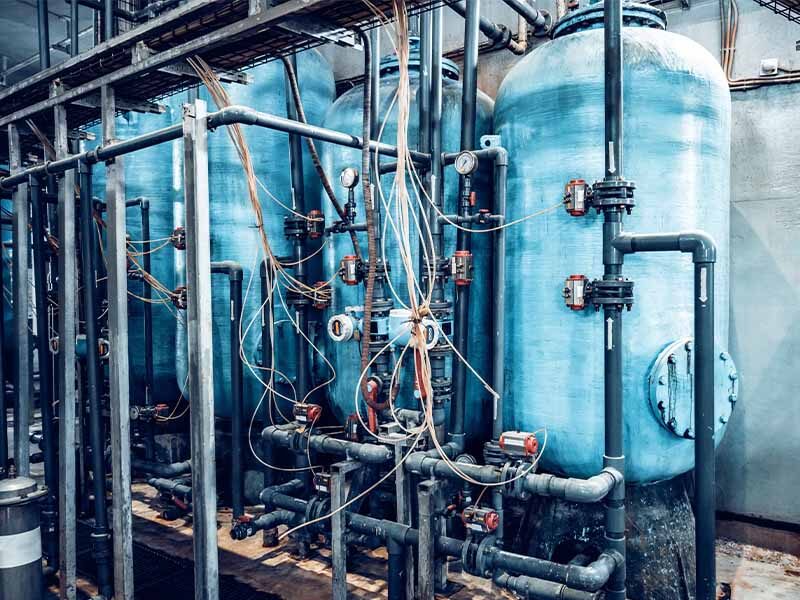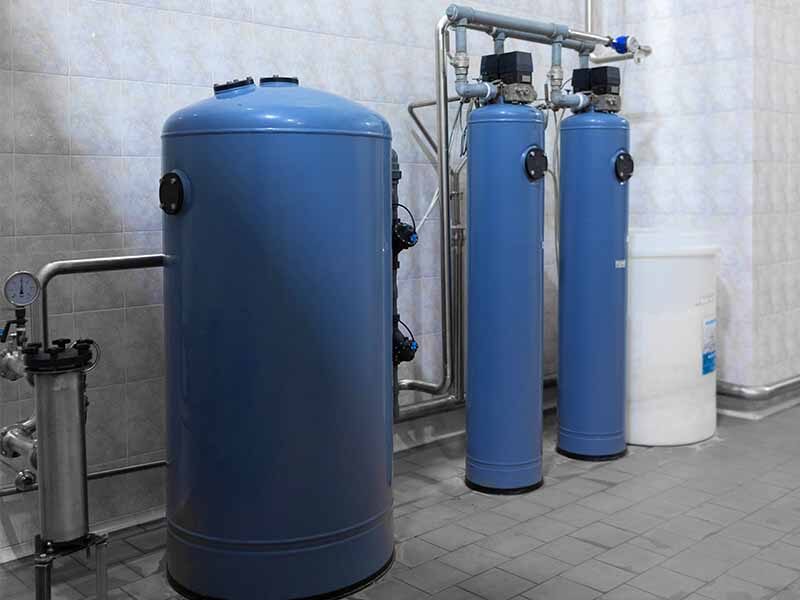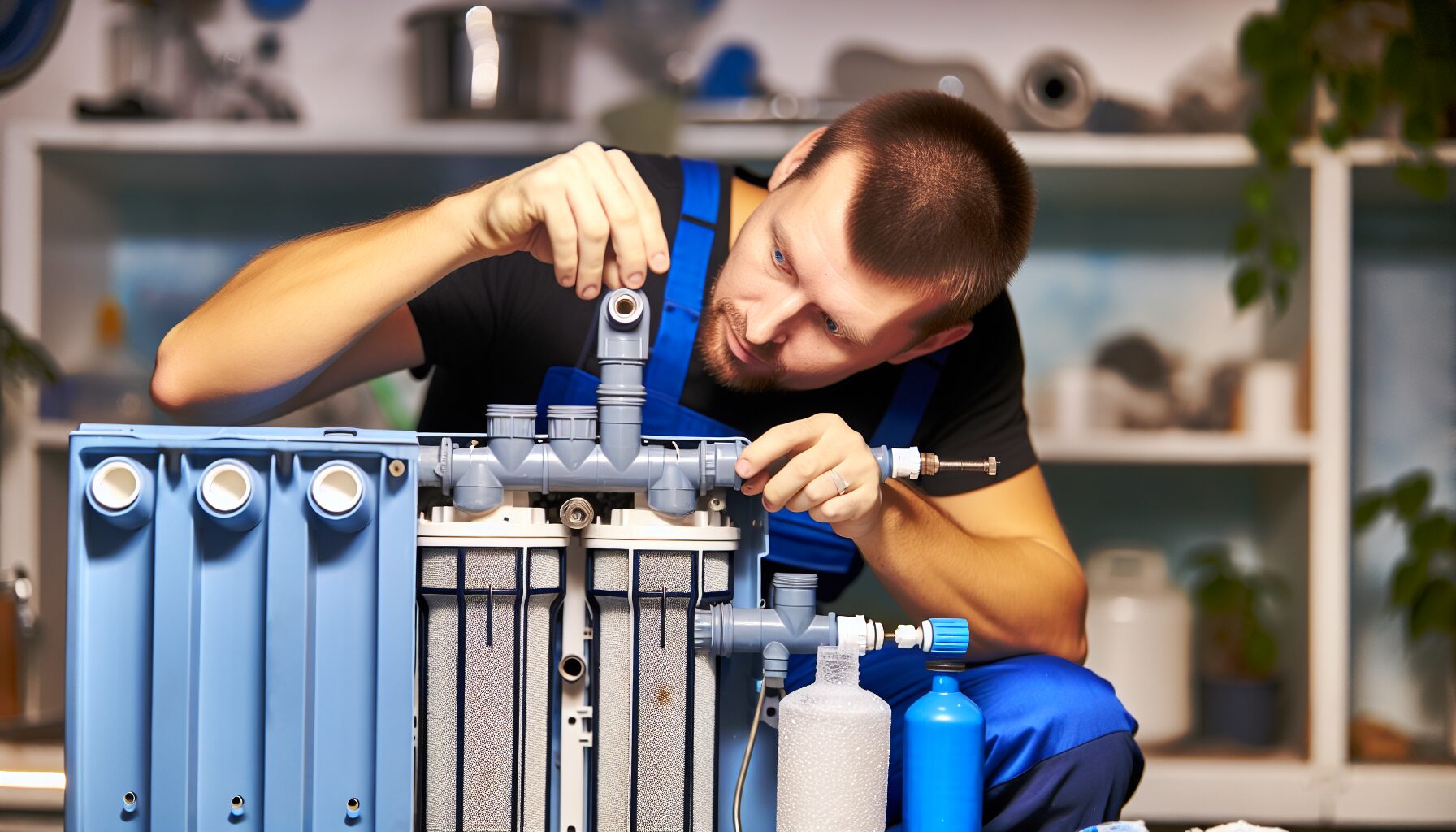
Water is a vital component of life, but do we ever stop to consider the quality of the water that flows from our taps? With health risks and environmental implications associated with unfiltered tap water, it’s essential to ensure our water supply is clean and safe. This journey will delve into the world of water Treatment systems, exploring their types, benefits, installation, and maintenance.
Water Treatment systems are essential for removing harmful contaminants like chlorine, lead, and pesticides from drinking water, contributing to health, cost savings, and environmental conservation.
Whole house water filtration systems filter all incoming water, offering wide contaminant reduction, and cost savings over time despite their initial investment, with benefits including reduced plastic waste and energy consumption.
Point-of-use water filters are convenient, easy to install at specific locations like under the sink, and are designed to target specific contaminants, providing clean water directly where needed.

Water Treatment systems offer several benefits, including:
Effectively removing harmful contaminants such as chlorine, lead, mercury, and pesticides from the drinking water
Contributing to a healthy lifestyle and improved health and well-being
Cost savings by reducing reliance on bottled water
Environmental conservation by reducing plastic waste
These systems act as protectors of our health and the environment, ensuring that activities are carried out with the necessary permission.
Installing a purification system in your home guarantees a steady flow of fresh, clean water, which is essential for maintaining good health and a safe environment. The advantages of a purification system vastly surpass the initial cost and effort required for installation, establishing it as a valuable investment for the future. But how do you choose the right system for your home? Let’s explore this further.
Various types of water Treatment systems flood the market, each tailored to address specific needs and eliminate certain contaminants. Principal technologies include gravity-fed filtration, reverse osmosis, and ultraviolet purification methods, all designed to provide clean and safe water for your family.
For example, different water treatment systems have different capabilities:
Reverse osmosis systems have the capacity to remove up to 99% of contaminants such as lead and asbestos.
Ultraviolet purifiers excel at exterminating 99.99% of harmful microorganisms.
Water softeners are engineered to remove minerals like calcium and magnesium, effectively softening your water.
So, what is the best way to determine the system that suits your needs?
The selection of a water purification system largely hinges on the quality of water in your area and the nature of contaminants that are present. For instance, if your water source has high levels of bacteria or viruses, you might need a system with a UV sterilizer or a reverse osmosis filter. Similarly, if there are elevated levels of heavy metals or chemicals, a system with activated carbon filters or ion exchange resins might be necessary.
Moreover, it’s necessary to match the size of the water purification system with the needs of your household. Factors like the number of bathrooms, the existing water purity, and the identified contamination should be considered. A household water testing kit can help you ascertain the capacity required for a household water filter and ensure its ability to deliver an adequate supply of clean water.

Whole house water filtration systems serve as all-encompassing solutions, engineered to supply clean water across your entire home. Think of them as the gatekeepers that ensure every drop of water entering your home is filtered and safe for use. Brands like Aquasana offer maximum contaminant removal, providing peace of mind with top-notch results. They do not introduce any chemicals into the water during the filtration process and have gathered high customer satisfaction with over 15,000 five-star reviews.
These systems are capable of reducing a wide range of contaminants, including:
chlorine
chloramines
lead
PFOA/PFOS
cysts
sediment
By delivering a substantial reduction of these contaminants, whole house water filtration systems ensure a safe water supply for your household. But how does one install and maintain such a system?
Installing a whole house water filtration system is a multi-step process that includes:
Locating the right spot
Affixing the system to the wall
Linking it to the main water supply and domestic plumbing
Setting up a pre-filter
Testing for potential leaks
While the process may seem daunting, professional installation is generally recommended.
The maintenance of a whole house water filtration system holds equal importance to its installation. Regular maintenance, typically performed once or twice a year, keeps the system functioning optimally. Common maintenance issues may include:
Dirty filters
Clogs
Leaks
Changes in water quality
Loose connections
Regular filter replacement and resolving these issues ensures the system provides clean, filtered water consistently.
Though the upfront cost of a whole house water filtration system may appear significant, the savings in the long-run are noteworthy. On average, using a whole house water filtration system can yield approximately $80 to $130 in annual savings compared to purchasing bottled water. Not to mention the additional cost reductions related to bottled water, decreased energy expenditures, and heightened property value.
The environmental benefits of whole house water filtration systems are equally significant. They:
Help reduce plastic waste by decreasing reliance on bottled water
Have the ability to eliminate microplastics from the water, preventing their release into the environment and mitigating plastic pollution
Consume less energy and utilize sustainable filter materials, contributing to a lower carbon footprint.

In contrast to whole house water filtration systems that guarantee an overall supply of clean water, point-of-use water filters are designed to serve specific areas in your home. These filters, installed at specific points like under the sink or on a countertop, provide clean water right where you need it. Renowned brands like Aquasana, Berkey, Waterdrop, iSpring, and Brita provides a variety of models, each with unique features and benefits.
Installing point-of-use water filters generally entails the following steps:
Identify the best location for the filter.
Link the filter to the water supply.
Fasten the filter securely.
Leak-check the system.
Activate the system as per the manufacturer’s instructions.
This makes point-of-use water filters a perfect solution for households looking for an easy-to-install and efficient water purification option.
Some of the leading brands for point-of-use water filters are:
Aquasana
Culligan
Waterdrop
DuPont
Brita
Each of these brands and their models, such as the Brita Tahoe, Pur Classic, ZeroWater, Big Berkey, and Bluevua, offer advanced filtration methods, spacious capacities, user-friendly designs, reverse osmosis options, and UV filters to eliminate microorganisms.
These brands and models have been highly rated by both experts and consumers, featuring in reputable sources like The New York Times, Consumer Reports, TechGearLab, CNET, Popular Science, and People. Thus, when it comes to choosing a point-of-use water filter, you can rely on these models for their proven performance and customer satisfaction.
Point-of-use water filters are well-known for their ease of use. Their installation involves simple processes like:
Shutting off the water supply
Identifying the installation location
Preparing the area
Mounting the filter housing
Connecting the water lines
Installing the faucet or dispenser
Placing the filter cartridge
Turning on the water supply
Testing the filter
This process typically requires a time allocation of approximately 30 minutes to 1 hour to gain access.
These filters:
Necessitate minimal plumbing adjustments for installation
Can be easily affixed to faucets, positioned on countertops, or installed under sinks
Are engineered for ease of use and demand minimal maintenance
Offer convenience for users.

The main objective of any water purification system is to eliminate harmful impurities from tap water. Common contaminants include:
Bacteria
Viruses
Parasites
Heavy metals
Pesticides
Industrial chemicals
Pharmaceuticals
These pollutants not only affect the taste and smell of the water but can also pose serious health risks.
Water Treatment systems utilize various methods to remove these impurities. Some of the primary techniques include reverse osmosis, ultrafiltration, and water filtration. These systems use membranes with minuscule pores or diverse filters to obstruct contaminants while allowing the water to flow through, thereby enhancing its quality.
The common contaminants typically present in tap water, along with other contaminants, can have various potential health risks. Contaminants such as:
Nitrates
Arsenic
Microorganisms
Bacteria
Viruses
Aluminum
Fluoride
can pose significant health hazards. For instance, bacterial impurities like coliform bacteria, E. coli, and fecal coliform bacteria can lead to gastrointestinal illnesses.
Heavy metals found in tap water, such as mercury and lead, can result in serious complications, including abdominal pain and diarrhea. Long-term exposure to metals like arsenic, cadmium, and chromium has been associated with the development of various cancers. Even the chlorination process, used to kill bacteria and other microbes, can negatively impact the quality of water, leading to skin irritation and respiratory symptoms in some individuals.
Water Treatment systems have various methods to eliminate these impurities. The process of water filtration involves passing the water through a series of filters with varying pore sizes and materials, effectively eliminating dissolved particles, germs, chemicals, parasites, bacteria, and viruses from the water. Activated carbon, for instance, captures and eliminates chemicals, heavy metals, pesticides, bacteria, and toxic organic compounds from the water.
A reverse osmosis system, on the other hand, exerts pressure on water, compelling it to pass through a semi-permeable membrane that sieves out impurities like heavy metals, chemicals, and bacteria, resulting in pure water. UV water Treatment systems are specifically engineered to eradicate microorganisms, thereby ensuring the elimination of both bacteria and viruses from the water.

Similar to any other system, water Treatment systems demand routine maintenance for peak performance. This includes routine testing, as well as filter replacement as necessary. Depending on the type of system, filters should generally be replaced annually or when a decrease in flow rate is noticed.
In addition to regular replacement, system components should be cleaned regularly. Essential tools for filter replacement usually include:
Tape measure
Shifter or adjustable spanner
Electrical tape
Nail punch with a hammer
Recognizing the right time to replace filters is crucial for the efficient operation of your water purification system. Here are some guidelines:
Activated charcoal filters should be replaced at least every three months.
Whole-house water filters typically require replacement every three to six months.
An indicator light or a decrease in water pressure could signal that it’s a moment to replace your point-of-use water filter.
The frequency of filter changes is influenced by usage and the presence of different types of water impurities. In high-demand environments or in households that consume more water, filters may need to be replaced more often to ensure the quality and safety of the water.
The maintenance of your water purification system goes beyond simply replacing the filters. Regular inspections and cleaning are equally important. The cleaning process usually involves flushing the system, soaking the filter in a vinegar solution, and ensuring a thorough rinse. Always refer to the manufacturer’s instructions for specific cleaning recommendations.
Components such as filter media, membrane systems, and filters require more frequent maintenance. Regular checks will help identify potential issues early, ensuring your system continues to provide clean water consistently.
We have taken a deep dive into the world of water Treatment systems, exploring their importance, types, and installation processes. We’ve learned about the harmful impurities found in our tap water and how these systems work tirelessly to remove them, providing us with pure, safe water. We’ve also covered the maintenance aspect, understanding when to replace filters and how to keep the systems operating at their best.
Armed with this knowledge, it’s time to take action. Invest in a water purification system that suits your needs and enjoy the peace of mind that comes with knowing you’re providing safe, pure water for your family using Clean Energy. The journey to healthier and safer water starts now!
The best water purification system is determined by Popular Science’s latest rankings.
Yes, a whole house water filtration system is worth it because it ensures pure water throughout your home, promotes peace of mind, extends the life of appliances, and helps maintain water pressure.
Having a water purification system at home is important because it provides a continuous supply of safe and clean water, promoting a healthy lifestyle and eliminating harmful impurities. Additionally, it offers cost savings and environmental benefits.
Consider the water quality, impurities, and your household needs to choose the right purification system for your home.
You should replace the filters in your water purification system annually or when you notice a decrease in flow rate. Regular replacement helps maintain the system’s efficiency and performance.
